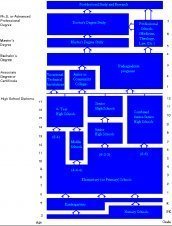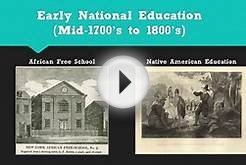One of the most attractive features of the U.S. higher education system is the flexibility it provides through the number and diversity of institution types it encompasses.
This diversity offers students options to specialize in a variety of academic disciplines and even gain employment training.
More than 4, 500 accredited institutions make up U.S. higher education in the United States. Unlike many countries, U.S. higher education institutions are not centrally organized or managed, but are accredited on a national or regional level by independent accrediting bodies.
A variety of institution types offer higher-education degrees. Liberal arts institutions, for example, offer courses in the arts, humanities, languages, and social and physical sciences. The majority of liberal arts institutions are private. Private colleges and universities are funded by a combination of endowments, gifts from alumni, research grants, and tuition fees. Private colleges and universities are usually smaller than public institutions and can have a religious affiliation or be single-sex schools.
Community colleges are another option and provide two-year associate degree programs to prepare students to continue studies for an undergraduate degree or help them gain occupational skills for immediate employment. State colleges and universities, also called "public universities, " were founded and subsidized by U.S. state governments to provide a low-cost education to residents of that state. Public universities generally offer access to research opportunities and classes in a wide variety of fields of study. These universities tend to be very large and generally admit a wider range of students than private universities. Each student's interests will guide his/her choice among the many possibilities.
Regardless of the institution type, in the United States, students typically earn credits for courses they take and these credits count towards the completion of a program. Courses are often divided into "core" subject areas to provide the foundation of the degree program and "major" courses to provide specialization in a subject area. Students can also take "elective" courses to explore other topics of interest for a well-rounded educational experience.
The U.S. academic calendar typically runs from September to May and can be divided into two academic terms of 16-18 weeks known as semesters. Alternatively, some schools may operate on a quarter or trimester system of multiple terms of 10-12 weeks.
Explore curated collections and recommendations based on your viewing history on 123movies.











